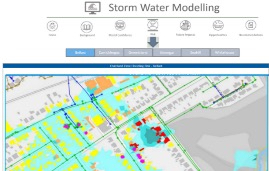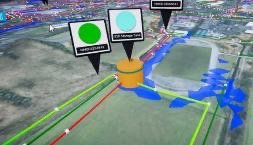Situation
Investment in wastewater infrastructure has not kept pace with demand. NI Water’s networks are under stress, manifesting in pollution and out of sewer flooding. Growth, creep and climate change will exacerbate pressure on systems. Belfast is not immune to these capacity issues. In common with other large cities, storm water ingress in Belfast, a predominantly combined catchment with ageing sewage infrastructure, represents a big challenge. We simply can’t afford to build our way out of capacity issues and our traditional approach to producing Drainage Area Plans is not enough.
 Action
Action
Our new modelling studies are transforming analysis and providing a world class evidence base on which informed decisions can be made. Our growing toolbox of digital surveys, powerful analytical tools and integrated environmental models are giving us a better insight than ever into how our networks performing and how this performance affects our customers, nature and the economy.
Industry leading modelling software (Infoworks ICM) is now being used to perform complex hydraulic analysis. It enables us to identify our worst performing overflows. Interactive Power BI dashboards then convey risks and recommendations; and bespoke software enables creation 3D visualisations.

We now maintain a live model library so we can continuously make decisions using all available upto-date data.
For Belfast we have gone further, understanding investigations and modelling of our storm network for the first time. We now know where storm water flow is coming from. Knowing the source and volume is helping us to target measures to remove or reduce storm water, ultimately freeing up headroom and limiting sewage overflows during storms.
Results
This robust evidence base is revealing the true scale of the challenge NI Water is facing in Belfast and beyond. The DAP teams are now undertaking on-site investigations (ranging from storm separation/SUDs to decentralisation and infiltration removal) across 20-30 targeted locations to confirm the best interventions to make before handing over to Capital Delivery teams for implementation.
These interventions are also going beyond the traditional concrete solutions thus generating cost savings, improve sustainability and accelerate planning & implementation. The smarter solutions include actuated valves, dynamic weir plates and over-riding pump controls to utilise existing network storage while optimising the networks and managing risks more effectively. Initial desktop studies indicate that they may provide benefits of reducing flooding and pollution by 20% for lower return period storms and can offer more sustainable solutions when combined with conventional and nature-based solutions.